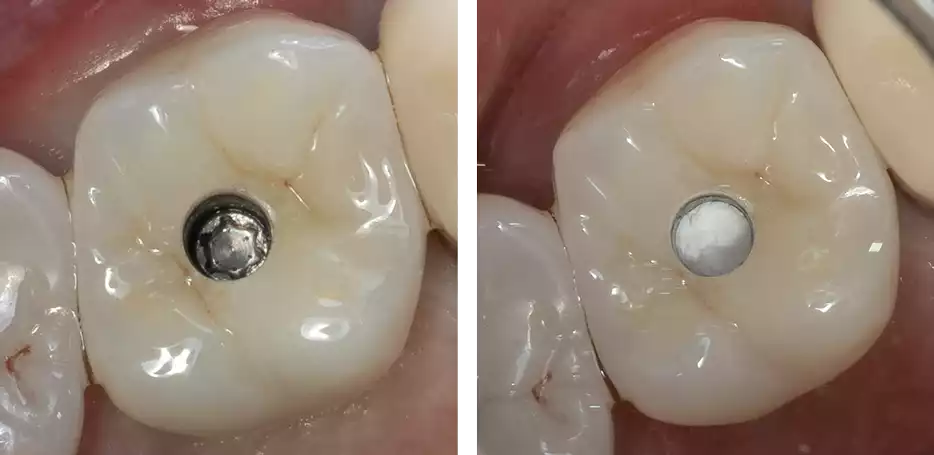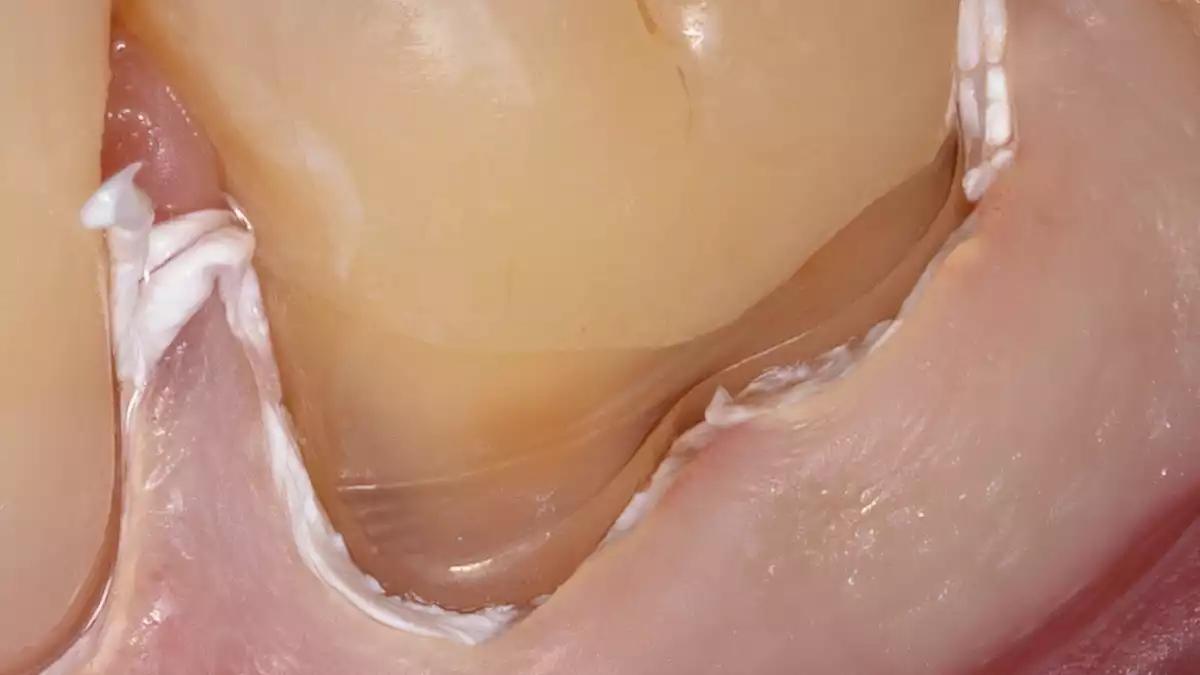Teflon tape
Teflon (PTFE) in Dentistry – Precision, Versatility, and Control
Why PTFE?
Polytetrafluoroethylene (PTFE), commonly known as Teflon, is a chemically inert, hydrophobic, and non-stick material that has become an essential tool in restorative and prosthetic dentistry. It does not bond to adhesives, composites, or impression materials – giving clinicians full control and flexibility during procedures.
Clinical Advantages of PTFE Tape
• Non-stick: Does not interfere with bonding agents, resin cements, or impression materials.
• Hydrophobic and clean: Repels moisture, leaves no fibers or contamination.
• Malleable and compressible: Can be adapted horizontally and vertically depending on the clinical situation.
• Layerable: Can be used in single or multiple layers to adjust thickness and pressure.
• Not visible on X-rays – Always confirm full removal after use.
(Note for beginners: PTFE is radiolucent – it does not show on radiographs. Always double-check it has been removed. A visual or verbal checklist with your assistant – e.g. “Did we remove the Teflon?” – can be a helpful habit.)
Key Indications in Clinical Dentistry
1. Implant screw access sealing
PTFE is packed into the screw channel before sealing with composite. It allows easy re-access without damage and prevents contamination.

2. Deep margin isolation
Inserted approximately 1 mm subgingivally to define and stabilize the finish line.
• Allows 360º control of the preparation margin and emergence profile.
• The insertion and shaping of PTFE tape helps define the margin for the dental technician, leading to a more precise fit of the final restoration.

3. Impression taking or scanning
Acts as a soft barrier preventing excess impression material from entering the sulcus.
• Clearly outlines margin and gingival contour in conventional impressions.
• In digital workflows, scanners accurately detect the position marked by the PTFE tape.
• the insertion and shaping of PTFE clearly communicates to the technician where the restoration should end.

4. Rubber dam inversion and sealing
Used for mechanical inversion and better marginal seal, especially when floss ligatures are ineffective or too aggressive.
5. Cementation control
PTFE tape can be placed around adjacent teeth or implant abutments to protect them from excess cement and unintentional bonding.
It simplifies clean-up and reduces the risk of peri-implant complications.
⸻
Why PTFE Often Outperforms Retraction Cord
• More flexible and adaptable – One piece can be shaped for both vertical and horizontal control.
• Less traumatic – Ideal for delicate or inflamed tissues.
• Simpler to use – No soaking or special packing instruments required.
• No bonding risk – PTFE remains inert, non-absorbent, and non-retentive.
⸻
Final Thought from Practice
In our clinic, we have completely replaced retraction cord with PTFE in most situations. It’s faster, cleaner, and more versatile – and for us, it simply works better.
That said, every clinician should try both techniques and decide what suits their workflow and clinical philosophy best.
